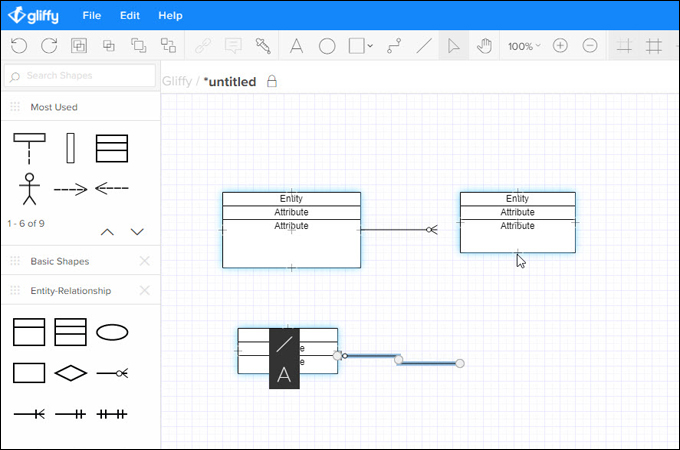

#Er diagram tool lucid software#
The work of Chen, Bachman, Brown, Martin and others also contributed to the development of Unified Modeling Language (UML), widely used in software design. Brown published works on real-world systems modeling. Bachman developed a type of Data Structure Diagram, named after him as the Bachman Diagram. Brown were working with close predecessors of Chen’s approach. It’s seen more recently in the 19th and 20th Century works of philosopher-logicians like Charles Sanders Peirce and Gottlob Frege.īy the 1960s and 1970s, Charles Bachman (above) and A.P.G. In a broader sense, the depiction of the interconnectedness of things dates back to least ancient Greece, with the works of Aristotle, Socrates and Plato. While serving as an assistant professor at MIT’s Sloan School of Management, he published a seminal paper in 1976 titled “The Entity-Relationship Model: Toward a Unified View of Data.” Peter Pin-Shan Chen), currently a faculty member at Carnegie-Mellon University in Pittsburgh, is credited with developing ER modeling for database design in the 1970s. “The Enhanced ER Model.” Generalization, Specialization and Aggregation in ER Model | Studytonight.Peter Chen (a.k.a. Reference:ġ.“Working with ER Diagrams.” Creating ER Diagram Representation in DBMS | Studytonight. That is the difference between ER and EER diagram. EER diagram is a visual representation of data, based on EER model that is an extension of the original entity-relationship (ER) model. ER diagram is a visual representation of data based on ER model, and it describes how entities are related to each other in the database. There are additional features in EER than the original ER diagram. Then it is a composite attribute.ĮR diagram is a visual representation of data based on ER model, and it describes how entities are related to each other in the database.ĮER diagram is a visual representation of data, based on EER model that is an extension of the original entity-relationship (ER) model.Ī database can be designed using an ER diagram. The name attribute can be divided into multiple attributes such as first name and last_name. If the Student has multiple telephone numbers, the telephone_number attribute can be considered as a multivalued attribute. The age attribute can be derived by the data_of_birth attribute. Some attributes can be derived from other attributes. In Student entity, the student_id can be considered as the key attribute because it helps to identify each read uniquely. Each entity contains a key attribute which helps to differentiate each record in the database. The Student entity can have attributes such as student_id, name, date_of_birth, telephone number. Relationship of degree three is a ternary relationship.Įach entity has properties that describe them. When an entity is related to itself, it is a recursive relationship. The 1:1, 1:M and M: N are binary relationships. Also, there can be multiple employees on one project. An employee can work on multiple projects. When many instances of an entity are associated with many instances of another entity, it is called as one to many (M: N) relationship. In a department, there can be multiple employees, but an employee is in one department. When one instance of an entity is associated with many instances of another entity, it is known as one to many (1:M) relationship.

When one instance of the entity is associated with one instance of another entity, it is called one to one relationship. The entities are related to each other with relationships. That kind of entity is known as a weak entity. Some entities might depend on another entity. If Student is an entity, the whole dataset of Student is called an entity set. In a School database, there can be entities such as Student, Lecturer, Course etc. The entities, attributes and relationships are common components of an ER diagram. The ER diagram represents the relationship between different entities. Side by Side Comparison – ER vs EER Diagram in Tabular Form Similarities Between ER and EER Diagramĥ. The EER diagram is based on the Enhanced ER Model. With the complexity of data, the ER model was developed further. The Entity relationship model is a model used to design and represent the relationships between data. It is based on the Entity-relationship model.

The ER diagram is used to design the database. EER diagram is a visual representation of data, based on EER model that is an extension of the original entity-relationship (ER) model.īefore entering the data into the database, the database should be designed. The key difference between ER and EER diagram is that the ER diagram is a visual representation of data based on ER model, and it describes how entities are related to each other in the database.


 0 kommentar(er)
0 kommentar(er)
